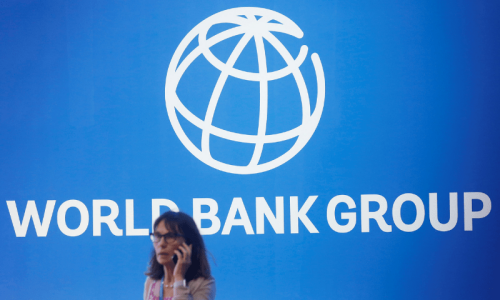With Bangladesh suppliers struggling to meet delivery deadlines amid prolonged turmoil, Pakistan textile exports could see a significant boost as Western brands begin sourcing from alternative destinations.
Factory shutdowns, port closures, and a business class in disarray — caught in a highly polarised environment and grappling with the fallout of some leaders’ close ties to the ousted Sheikh Hasina government — have all contributed to the disruption.
Bangladesh has emerged as a global textile powerhouse, ranking as the second-largest exporter of ready-made garments with over $45 billion in exports last year, trailing only China and outpacing regional cotton producers India and Pakistan.
The unrest, which began with student protests in June escalated into a civil rights movement by July, leading to a regime change in early August.
Interim leader, Muhammad Yunus, committed to restoring order, created a special force to protect factories after some were set ablaze by angry mobs. However, most overseas observers and independent analysts in Bangladesh foresee a bleak short-term outlook, predicting a significant downturn in key economic indicators.
The absence of a clear timeline for elections and ongoing uncertainty over policy direction further complicates the recovery of business confidence and the revival of economic activities.
‘With our current capacity utilisation at 65-70pc, there’s a significant export surplus ready to be tapped’
Nervous and apprehensive, Bangladeshi business leaders declined to comment publicly on the situation. Privately, some expressed deep concerns over the ongoing volatility, citing shipment delays, order cancellations and the costly reliance on air cargo to meet deadlines.
The high transport costs have made trade unsustainable for many, as flying cargo has severely eroded profit margins. Even those opting for the expensive route to protect their reputation and maintain relationships with overseas partners may find the effort futile.
Pakistani textile manufacturers, currently operating with 30-40 per cent idle capacity, anticipate a potential 20pc boost in business within a year. Major Western brands, eager to diversify their supply chain due to disruptions in Bangladesh, are building inventories for the high-demand winter season and are also showing interest in Pakistan as an alternative source.
As inquiries for additional supplies from Western trade partners start trickling, players in Pakistan’s textile sector are optimistic that the government will take necessary steps to capitalise on this opportunity. While the situation in Bangladesh may eventually stabilise, it will take time.
Meanwhile, Western buyers, including well-known apparel brands like H&M, Zara, Decathlon, Uniqlo, etc., are reportedly exploring alternative sourcing options ahead of the winter sales rush in European and American markets.
Gohar Eijaz, former interim federal minister and ex-chairman of the All Pakistan Textile Mills Association (Aptma), emphasised the urgency for textile exporters. “The window of opportunity is barely two weeks. If the government doesn’t act swiftly, these orders will go to India, Vietnam or Cambodia. I estimate that $5bn worth of apparel and garment orders from Western clothing brands could shift from Bangladesh to Pakistan.
“We are not competitive with the current energy prices at 16 cents per unit and the existing tax rates on the export supply chain. The government needs to act decisively by reducing energy costs for textile manufacturers to nine cents per unit and reinstating SRO 1125 to allow the domestic textile manufacturers to seize this opportunity, potentially creating an additional five million jobs and adding $5bn to our export earnings,” he asserted.
SRO 1125, which allowed a zero-rating regime for five export-oriented sectors — textile, leather, carpets, surgical and sports goods — was abolished to shore up public revenues.
Musadaq Zulqarnain, co-founder of Interloop Limited, the largest listed textile company by market capitalisation, was less optimistic. “In the short term, I don’t foresee significant movement of order to Pakistan, if any at all. Most Pakistani manufacturers lack the agility and speed to meet that demand.
“There’s some talk of denim orders shifting to Pakistani suppliers. In the medium term, much will depend upon the situation in Bangladesh. It’s not just the overall security situation, but also the availability of manufacturing units, as reports indicate that some plants linked to Awami League supporters have been targeted.
“I have no doubt that the brands and retailers heavily reliant on sourcing from Bangladesh will start shifting some of their production elsewhere to reduce long-term exposure. They have the choice to move operations to Indonesia, Cambodia, India or Pakistan, depending on each country’s capabilities and costs. Pakistan has significant overlap in knitwear and denim clothing but the key will be its costs stacked against those in other countries.”
Khurram Mukhtar, Chief Patron of the Pakistan Textile Exporters Association and CEO of Sadaqat Ltd, sees the situation in Bangladesh as an opportunity for Pakistan. “As brands look for alternative suppliers, our textile industry, with its established infrastructure, export surplus, one-stop solutions, and quality, has the potential to absorb some of the displaced orders. However, to fully capitalise on this opportunity, we must ensure competitive pricing and timely deliveries.
“The government must quickly develop an action plan that includes providing energy at competitive rates, ensuring access to working capital, and resolving outstanding refund issues. Additionally, the restoration of the Export Finance Scheme (EFS) will be crucial in driving export growth.
“Besides, US and other Western brands are also pulling out of China, moving their business to India and other places. Indian companies are strategically investing in Oman to capitalise on this shift and benefit from its duty-free status.
“Even modest actions by the government, such as restoring the EFS [export facilitation scheme], which wouldn’t impact tax revenue, could give us a competitive edge. With our current capacity utilisation at 65-70pc, there’s a significant export surplus ready to be tapped,” he added.
Finance Minister Muhammad Aurangzeb was contacted for comments, but his response did not arrive before the publishing of this article.
Published in Dawn, The Business and Finance Weekly, August 19th, 2024











































